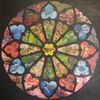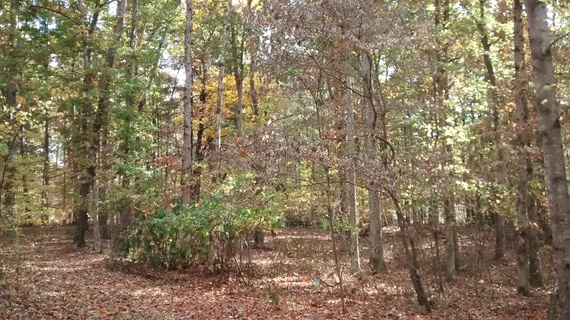For many people autumn's falling leaves remind them of the coming bleak winter and that all things have an end. Fall leaves remind them of death. Actually, however, falling leaves reveal that the trees are alive. Dead trees don't drop their leaves.
People are like poplars. If we are alive, we let go. It's the dead that hang on.
I learned about letting go of leaves when a tree in front of our house died suddenly one summer. Its leaves dried up and stayed on the tree for a couple years until the wind and elements decimated them. The tree didn't have a chance to let go.
Why and How Trees Let Go
Deciduous trees like poplars and maples follow a strategy of capturing solar energy when it's most available. By having many broad leaves, their solar collectors, deciduous trees make the most of the available sunlight to create the vital carbohydrates the tree needs. The large leaf surface area implies that the trees also release lots of water into the air as they photosynthesize. This, in turn, creates the "suction" that sucks water from the ground through the trunk to the leaves.
As winter approaches trees run the risk of having their fragile leaves die from the cold. If this were to happen, they would lose access to valuable resources in the leaves that the tree could use in the spring. So, they monitor various conditions such as temperature and day length and take action when they note the onset of autumn.
At that time trees actively "choose" to let go of their leaves. When the conditions indicate it is time, trees remove the resources from the leaves that they want to save. Then they grow a layer of cork-like cells at the base of each leaf's stem. The layer of cells closest to the leaf contain fractures that allow rain, wind, or just the leaf's weight to cause it to separate from the twig. While this is occurring, the chlorophyll dies revealing the pigments that lay hidden in the leaf. This not only leads to the glorious blaze of color we associate with fall but also signals the tree's readiness for new growth in the spring. Detachment leads to revelations of things hidden and new life.
Trees that die while they still have leaves don't have the chance to let them go. Their shriveled leaves hang on the tree for all to see. Conversely, if these trees stubbornly hung on to their leaves in the fall, they would die. Luckily, they know better.
People as Poplars
We all know people who have shriveled up - people who are bitter, who blame others for their misfortunes, who don't understand why others don't like them. Such people all too often either have not learned how to watch for signs telling them to let go or have chosen to hang on to their leaves. They're dead to the world and themselves.
Alive people, on the other hand, use the same life strategy as maples and poplars. They read the signs to learn when it's time to drop attitudes, expectations, desires, and ideas that drain more energy than they bring. They learn to read emotions and physical symptoms to know when what seemed like a wonderful idea or project has turned into a burden. Alive people notice the stress and negativity caused by holding on to a grudge and realize that doing so endangers their own well-being.
When the signs indicate they need to let go, alive people let these things go. When they do, they often discover resources and sides of their personalities they didn't know existed. Like poplars and sugar maples they glow once they drop their leaves. And with time they grow.
Would that we all were as wise as the trees...
More about this author
Certificate in Contemplation and Creation Care
Center for Religion and Environment at Sewanee: The University of the South

